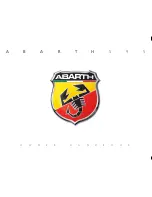
surface, try switching the Traction Control
娂
system off. This may allow
excess wheel spin to “dig” the vehicle out and enable a successful
“rocking” maneuver.
If the Traction Control
娂
system is cycled excessively, the brake portion
of the system will shut down to prevent the rear brakes from
overheating. A limited Traction Control
娂
function using only engine
torque reduction will still help control wheels from over-spinning. When
the rear brakes have cooled down, the system will again function
normally. Anti-lock braking is not affected by this condition and will
function normally during the cool down period.
If a system fault is detected, the traction control switch’s OFF indicator
will illuminate and your vehicle should be serviced.
Aggressive driving in any road conditions can cause you to lose
control of your vehicle increasing the risk of severe personal
injury or property damage. The occurrence of a Traction Control
娂
event is an indication that at least some of the tires have exceeded
their ability to grip the road; this may lead to an increased risk of loss
of vehicle control, vehicle rollover, personal injury and death. If you
experience a severe road event, SLOW DOWN.
STEERING
To prevent damage to the power steering system:
•
Never hold the steering wheel at its furthest turning points (until it
stops) for more than a few seconds when the engine is running.
•
Do not operate the vehicle with a low power steering pump fluid level
(below the MIN mark on the reservoir).
If the power steering system breaks down (or if the engine is turned
off), you can steer the vehicle manually, but it takes more effort.
If the steering wanders or pulls, check for:
•
an improperly inflated tire
•
uneven tire wear
•
loose or worn suspension components
•
loose or worn steering components
•
improper steering alignment
A high crown in the road or high crosswinds may also make the steering
seem to wander/pull.
REVIEW COPY
2005 Thunderbird
(tbr)
, Owners Guide (post-2002-fmt)
(own2002)
,
Market:
USA_English
(fus)
Driving
142
















































